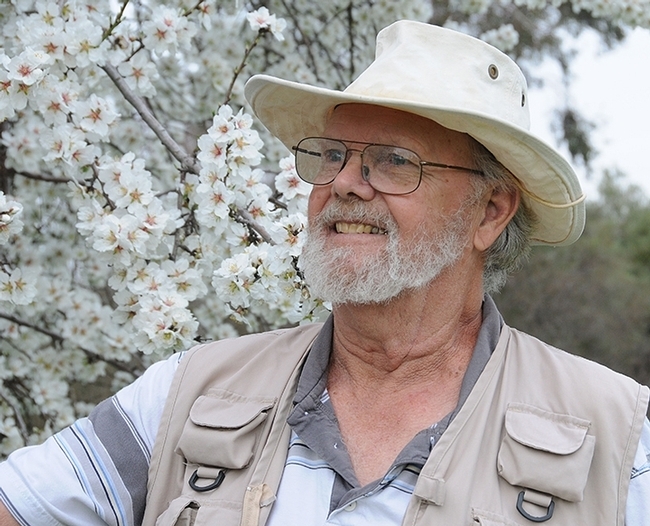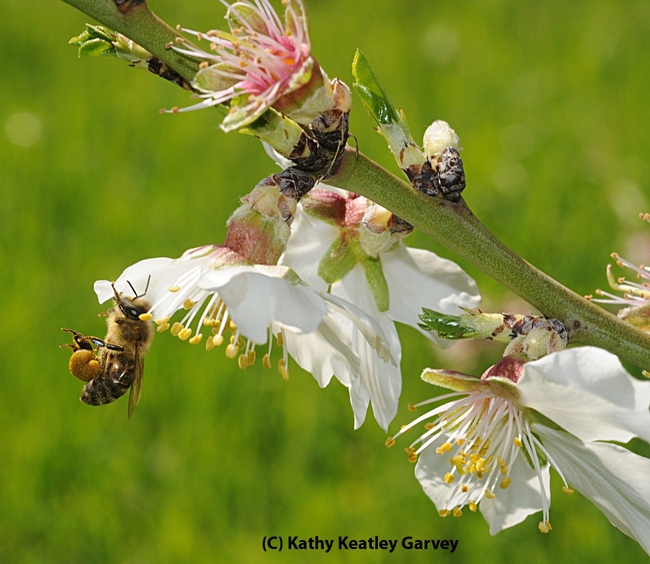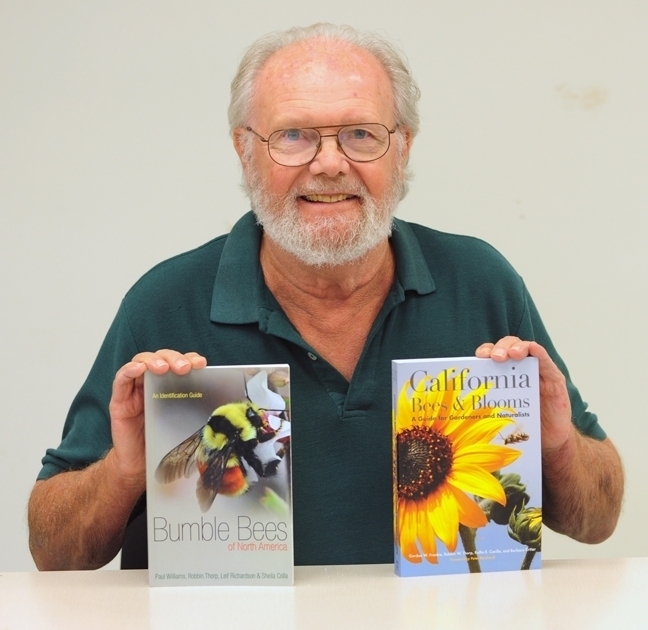
The late Robbin Thorp, the renowned UC Davis distinguished emeritus professor of entomology and global bee authority who will be memorialized at a celebration of life on Friday, Oct. 11 at 6 p.m. in the Putah Creek Lodge, UC Davis, began his career studying honey bees.
Professor Thorp, who served as a member of the UC Davis entomology faculty for 30 years, from 1964-1994, continued to engage in research, teaching and public service until a few weeks before his death on June 7. In his retirement, he co-authored two books, both in 2014: Bumble Bees of North America: An Identification Guide and California Bees and Blooms: A Guide for Gardeners and Naturalists.
Thorp was a tireless advocate of pollinator species protection and conservation and known for his expertise, dedication and passion in protecting native pollinators, especially bumble bees, and for his teaching, research and public service. He was an authority on pollination ecology, ecology and systematics of honey bees, bumble bees, vernal pool bees, conservation of bees, native bees and crop pollination, and bees of urban gardens and agricultural landscapes.
The distinguished emeritus professor was also an authority on honey bees.
Said Eric Mussen, Extension apiculturist emeritus: "We should not forget that Robbin originally was hired to work on honey bees, and he did. His greatest area of expertise was the use of honey bees in almond pollination. Robbin determined that until the colonies reached the population size of six frames of bees, they did not have enough spare bees to serve as foragers (pollinate almonds) since they were all needed to keep the brood warm."
"He also noted that the amount of pollen collected by the bees in a colony was pretty much in direct proportion to colony size, peaking at between 10 and 12 frames of bees," Mussen said. "It was obvious to Robbin that the bees still visited almond blossoms for nectar, days after there was no pollen left in the flowers and the stigmata were no longer young enough to be pollinated. Other studies determined which blossoms along the branches were pollinated earlier and later during the season. All of those studies were very well designed and the results contributed significantly to our recommendations to growers and beekeepers for obtaining maximum benefit from the bees."
“Robbin's scientific achievements during his retirement rival the typical career productivity of many other academic scientists,” said Steve Nadler, professor and chair of the UC Davis Department of Entomology and Nematology. “His contributions in support of understanding bee biodiversity and systematics are a true scientific legacy.” (See more about Robbin Thorp)
Robbin Thorp was a treasure, a gem in the entomological world of bees and beyond.
Attached Images:

A honey bee packing pollen and nectaring on an almond blossom at UC Davis. (Photo by Kathy Keatley Garvey)

In his retirement, Robbin Thorp co-authored two books, "Bumble Bees of North America: An Identification Guide" and "California Bees and Blooms: A Guide for Gardeners and Naturalists." (Photo by Kathy Keatley Garvey)

Robbin Thorp (left), legendary authority on bees, shows UC Davis alumnus Alex Wild the "Miss Bee Haven" sculpture in the UC Davis Department of Entomology and Nematology's bee garden on Bee Biology Road. Wild, who received his doctorate in entomology at UC Davis, is the curator of entomology at the University of Texas, Austin. This image was taken in 2008. (Photo by Kathy Keatley Garvey)